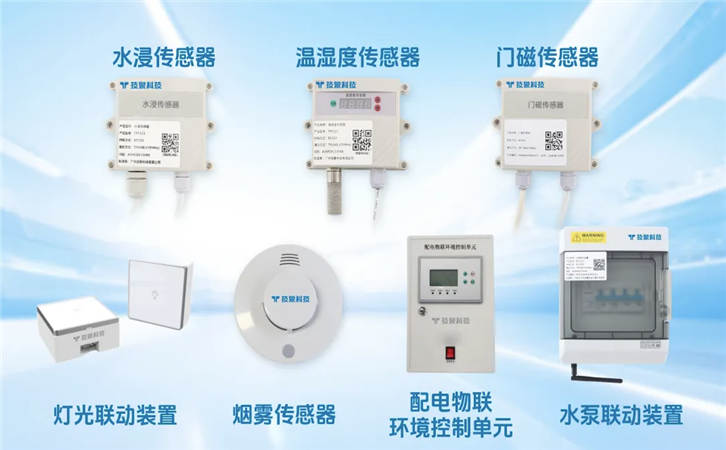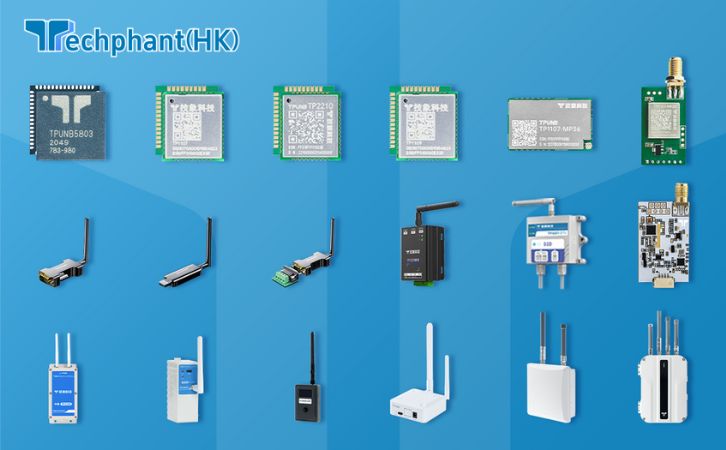Smart cities leverage the Internet of Things (IoT) to enhance urban living through interconnected systems that optimize resources, improve public services, and promote sustainability. Sub-GHz wireless technologies, operating in frequency bands below 1 GHz (e.g., 433 MHz, 868 MHz, 915 MHz), are pivotal in enabling scalable IoT networks in urban environments. Their long-range, low-power, and robust signal penetration capabilities make them ideal for connecting thousands of devices across dense cityscapes. This article explores how Sub-GHz technologies drive smart city initiatives, detailing their applications, benefits, and challenges across four key areas.
I. Long-Range Connectivity for Urban Coverage
Sub-GHz technologies excel in providing long-range connectivity, a critical requirement for smart city IoT networks that span large urban areas. With ranges of 2-5 kilometers in dense environments and up to 15 kilometers in open settings, Sub-GHz protocols like LoRaWAN and Sigfox enable a single gateway to cover entire neighborhoods or districts. This reduces the need for extensive infrastructure, lowering deployment costs compared to higher-frequency technologies like Wi-Fi or 5G, which require denser networks of access points.
For example, in smart parking systems, Sub-GHz sensors embedded in parking spaces transmit occupancy data to gateways kilometers away, guiding drivers to available spots via mobile apps. In Amsterdam’s smart city initiatives, LoRaWAN networks connect thousands of sensors for traffic and waste management, demonstrating Sub-GHz’s ability to scale across urban landscapes. The low-frequency signals penetrate buildings, tunnels, and other obstacles, ensuring reliable communication in complex city environments where line-of-sight is often obstructed.
Challenges include regulatory restrictions, such as duty cycle limits in Europe’s 868 MHz band (e.g., 1% transmission time), which can constrain frequent data updates. Additionally, regional variations in Sub-GHz bands (e.g., 915 MHz in the U.S.) require tailored hardware, complicating global deployments. Despite these hurdles, Sub-GHz’s long-range capabilities enable cost-effective, scalable networks that form the backbone of smart city connectivity.
II. Low-Power Operation for Sustainable Deployments
Energy efficiency is a hallmark of Sub-GHz technologies, making them ideal for battery-powered IoT devices deployed across cities. Smart city applications, such as environmental monitoring or street lighting, rely on sensors that must operate for years without maintenance. Sub-GHz protocols like LoRaWAN and NB-IoT use low data rates (e.g., 0.3-50 kbps) and duty-cycling techniques, where devices remain in sleep mode most of the time, waking only to transmit small packets.
For instance, air quality sensors measuring PM2.5 or CO2 levels can operate on small batteries for 10-15 years, transmitting hourly updates to a LoRaWAN gateway. In Singapore’s Smart Nation program, Sub-GHz sensors monitor water levels in drainage systems, sending alerts during heavy rain to prevent flooding, all while maintaining ultra-low power consumption. NB-IoT, another Sub-GHz protocol, leverages power-saving modes like Extended Discontinuous Reception (eDRX) to further optimize energy use, making it suitable for devices in hard-to-access locations like underground utilities.
Challenges include balancing transmission frequency with battery life, as frequent updates can reduce longevity. Energy harvesting (e.g., solar panels on streetlight sensors) is being explored to extend device lifespans, but urban shading or vandalism can limit its effectiveness. Nevertheless, Sub-GHz’s low-power profile ensures sustainable, maintenance-free deployments, supporting the scalability and longevity of smart city IoT networks.
III. Robust Signal Penetration in Dense Environments
Urban environments pose significant challenges for wireless communication, with high-rise buildings, underground infrastructure, and electromagnetic interference disrupting signals. Sub-GHz technologies address these issues through their ability to penetrate obstacles and maintain connectivity in non-line-of-sight conditions. The longer wavelengths of Sub-GHz signals pass through concrete, glass, and metal more effectively than 2.4 GHz or 5G signals, ensuring reliable data transmission in dense cityscapes.
In smart waste management, Sub-GHz sensors in trash bins monitor fill levels and transmit data through surrounding buildings to gateways, optimizing collection routes. For example, Seoul’s smart bin systems use LoRaWAN to achieve consistent connectivity despite urban obstacles. Sub-GHz’s resistance to interference is enhanced by modulation techniques like Chirp Spread Spectrum (CSS) in LoRaWAN, which spreads signals across a wide bandwidth to minimize noise from other devices in the unlicensed spectrum.
However, Sub-GHz networks face interference risks in crowded bands, where devices like remote controls or industrial equipment operate. Frequency hopping and adaptive channel selection mitigate this, but require sophisticated network management. Additionally, the low data rate of Sub-GHz (e.g., 243-byte payload limits in LoRaWAN) restricts its use for high-bandwidth applications like video surveillance. Despite these limitations, Sub-GHz’s robust penetration makes it a cornerstone of reliable urban IoT connectivity.
IV. Scalability and Integration with Smart City Platforms
Sub-GHz technologies enable scalable IoT networks by supporting thousands of devices per gateway, a critical feature for smart cities with diverse applications. Protocols like LoRaWAN and Sigfox are designed for low-bandwidth, infrequent transmissions, allowing networks to handle high device densities without congestion. This scalability is complemented by Sub-GHz’s integration with smart city platforms, where data from sensors is aggregated, analyzed, and acted upon to improve urban services.
For example, in Toronto’s Sidewalk Labs project, Sub-GHz networks connect sensors for traffic flow, energy usage, and pedestrian movement, feeding data into cloud-based platforms for real-time analytics. Machine learning models process this data to optimize traffic signals, reduce energy consumption, or predict maintenance needs for infrastructure. NB-IoT integrates with cellular backhauls, enabling seamless data transfer to city-wide dashboards, while LoRaWAN gateways often include edge computing to process data locally, reducing latency and cloud costs.
Challenges include ensuring interoperability between Sub-GHz devices and platforms, as proprietary protocols can hinder integration. Security is also critical, with Sub-GHz networks using AES-128 encryption to protect data from cyberattacks, though vulnerabilities like jamming remain a concern. Data compression and aggregation techniques are often employed to manage limited bandwidth, ensuring efficient transmission of critical insights. By enabling scalable, integrated networks, Sub-GHz drives the intelligence and responsiveness of smart city ecosystems.
Conclusion
Sub-GHz technologies are transforming smart cities by providing long-range, low-power, and robust connectivity for scalable IoT networks. Their ability to cover large urban areas with minimal infrastructure supports applications like smart parking and waste management, while low-power operation ensures sustainable sensor deployments for environmental monitoring and utilities. Robust signal penetration delivers reliable communication in dense environments, and integration with analytics platforms enables data-driven urban planning. Despite challenges like spectrum interference, regulatory constraints, and bandwidth limitations, Sub-GHz protocols like LoRaWAN, Sigfox, and NB-IoT are pivotal in building resilient, efficient, and sustainable smart cities. As urban populations grow, Sub-GHz will continue to drive IoT innovation, shaping the future of connected urban ecosystems.



